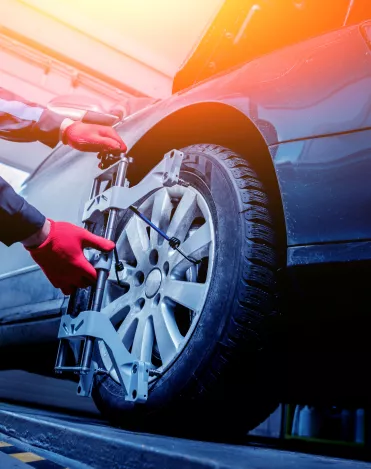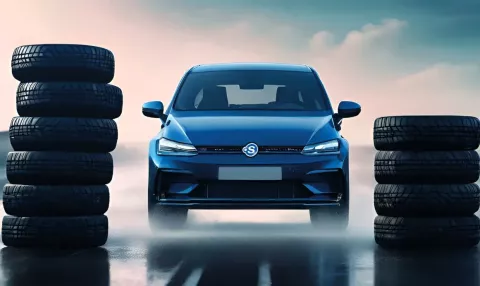Wheel balancing
Balancing after mounting new tyres is necessary as tyres never have a perfect weight distribution. Indeed, one side of the tyre is always heavier than the other. As car and tyre service center, Point S offers its customers tyre and wheel balancing for all vehicle categories: cars, motorbikes, light trucks and trucks.

What is tyre balancing?
Many people are confused with tyre balancing and alignment. Tyre alignment consists in making wheels perfectly parallel to each other and perpendicular to the ground. Tyre balancing is related to a tyre unbalanced that involve an uneven mass distribution within a tyre or the entire wheel.To fix this issue, tyre balancing consists in distributing the weight of the wheel in a precise and uniform way in order to place counterweights in the rims.
Point S, specialist of all tyre services
Point S centers have the latest automotive equipment for wheel alignment and balancing. As their fitting, the balancing of your tyres should be done by a professional.
Before placing the weights, your Point S expert will mount the tyre with the valve opposite to the marking on the tyre, if there is one. This marking indicates the heaviest side of the tyre. The valve being the heavier of the rim, it already creates a first balance that limits the number of tyres to mount.
The shots are then placed using a machine that turns the wheel and detects imbalances. The location of the pellets is indicated by laser beams. The center of gravity must be perfectly centered in the rotation axis.
What’s the effects of a bad tyre balancing?
Balancing tyres helps to prevent steering wheel vibration and uneven tyre wear. Moreover, after a shock, your driving comfort is no longer the same and balancing can be impacted.
Wrong tyre balancing can lead to the following issues:
- Wear of suspension and components of the vehicle
- Wear of management boards
- Premature and uneven wear of the tyres
- Reduced tyre lifetime
- Increase in fuel consumption
- Vibration of the wheelchair or on the rim of the vehicle while driving
In case of an impact on a pavement, the weight of your wheel can be distributed unevenly. If you notice any problem, it is a good idea to check balance and parallelism of the wheels.
When to check tyre balancing?
Point S recommends to balance the rear wheels as well as the front wheels to protect your tyres from wear and optimize their lifetime. Tyres and wheels should be checked and balanced every 20,000 km and every time a tyre is repaired, replaced or fitted. Make an appointment or visit your Point S centre to get your tyres balanced properly.

